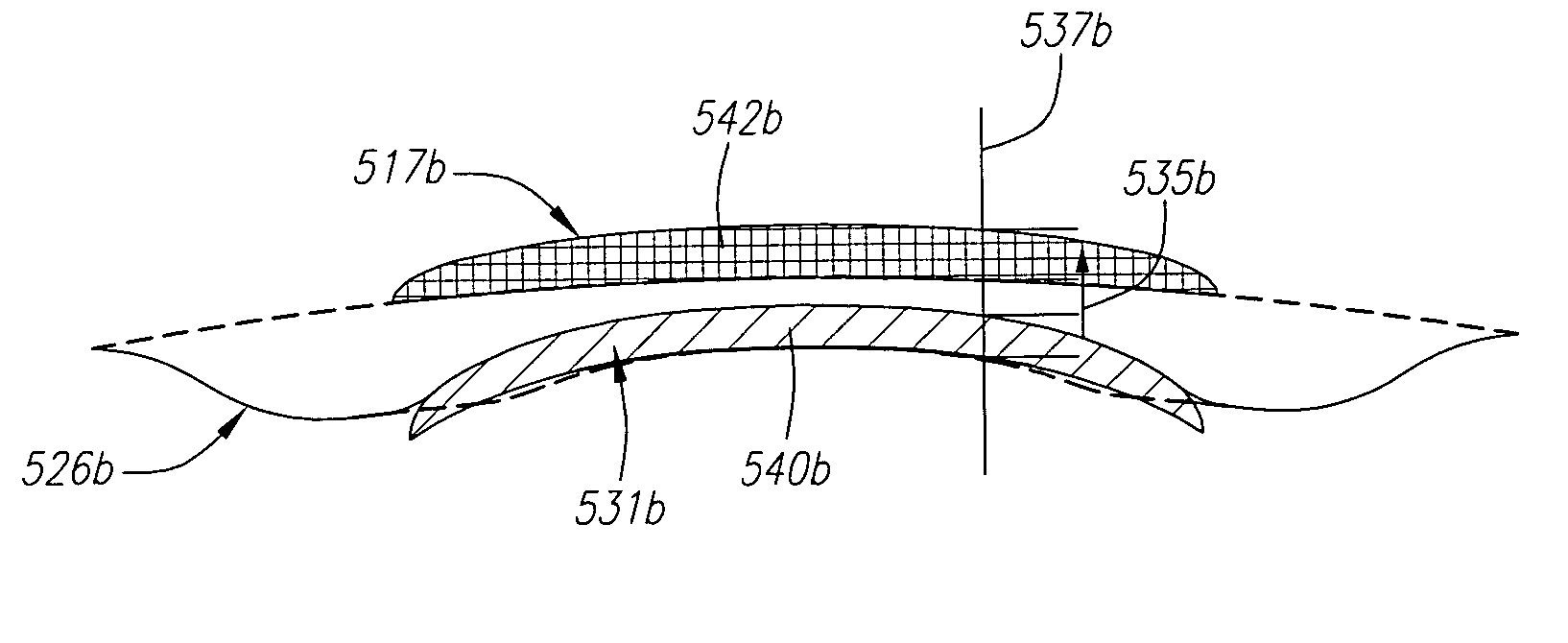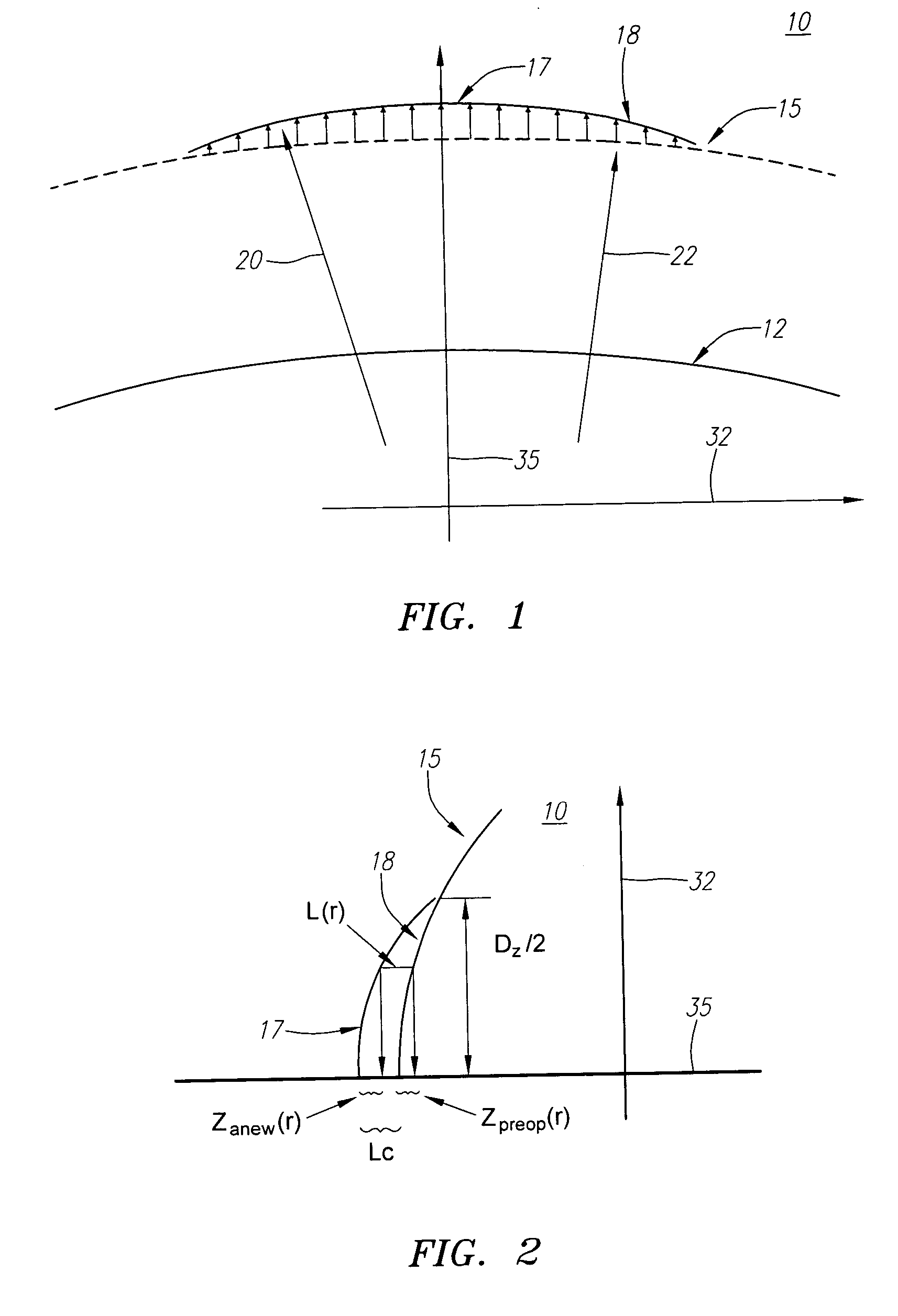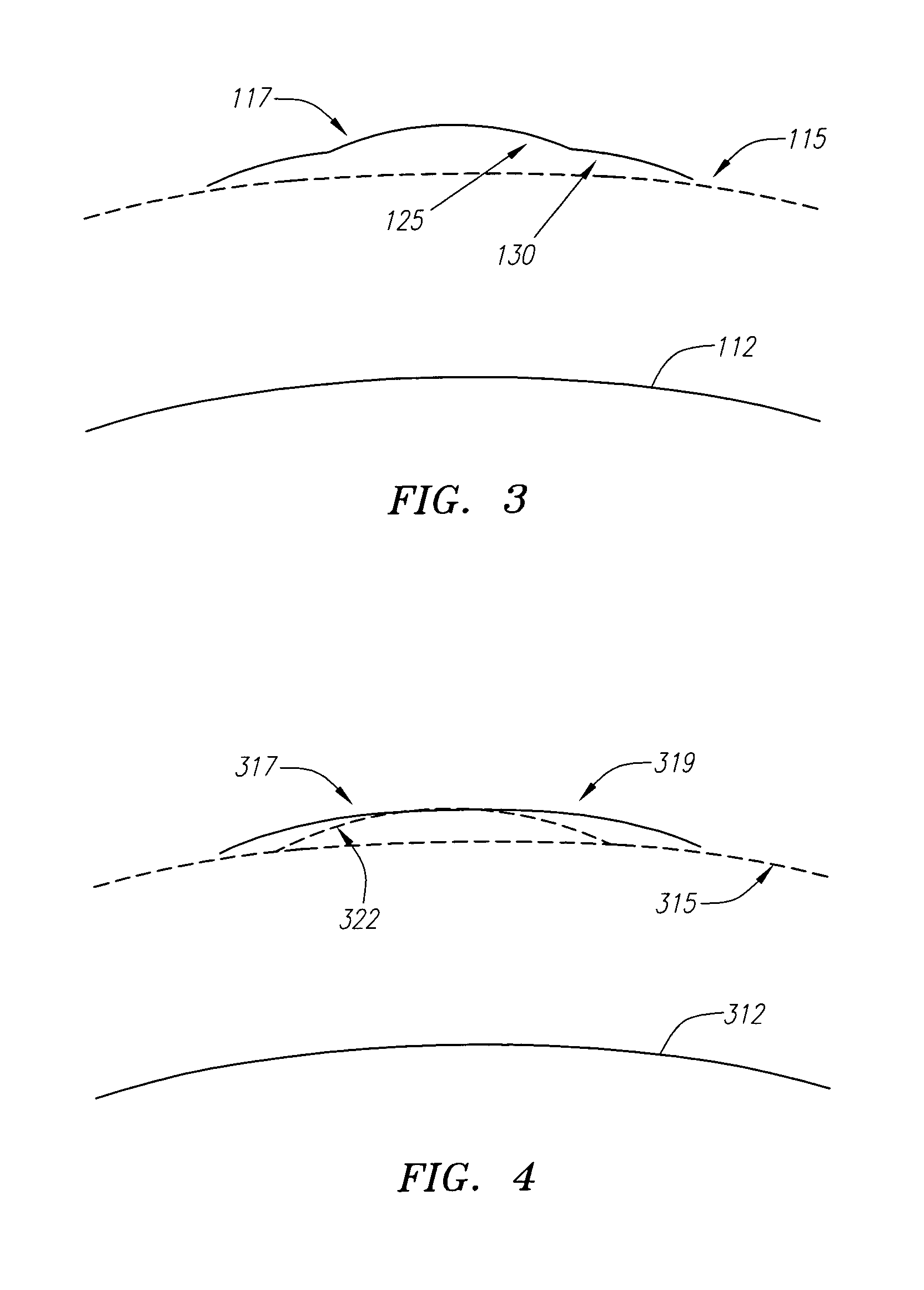Intracorneal inlays
a technology of inlays and incisions, applied in the field of incisions, can solve the problems of inability to accurately predict the actual post-operative refractive outcome of inlays, poor design of warsky models, and vision impairmen
- Summary
- Abstract
- Description
- Claims
- Application Information
AI Technical Summary
Benefits of technology
Problems solved by technology
Method used
Image
Examples
Embodiment Construction
[0018] Described herein are designs of intracorneal inlays to produce desired shapes of the anterior corneal surface for correcting vision impairments.
[0019] A first step in the design of an inlay in accordance with the invention is determining a profile thickness that the inlay must induce on the anterior corneal surface to produce a desired anterior corneal surface. Although not so limited, the thickness profile may be illustrated by way of an example. In this example, a thickness profile is specified for the correction of hyperopia (far-sightedness). Hyperopia occurs when light entering the eye focuses behind the retina. Hyperopia can be corrected by increasing the curvature of the anterior corneal surface and thereby the refractive power of the cornea, which causes light to bend more in the cornea and focus at the retina. This type of correction is known as hyperopic correction.
[0020] The objective in this example is to increase the curvature of the cornea's anterior surface t...
PUM
 Login to View More
Login to View More Abstract
Description
Claims
Application Information
 Login to View More
Login to View More - R&D
- Intellectual Property
- Life Sciences
- Materials
- Tech Scout
- Unparalleled Data Quality
- Higher Quality Content
- 60% Fewer Hallucinations
Browse by: Latest US Patents, China's latest patents, Technical Efficacy Thesaurus, Application Domain, Technology Topic, Popular Technical Reports.
© 2025 PatSnap. All rights reserved.Legal|Privacy policy|Modern Slavery Act Transparency Statement|Sitemap|About US| Contact US: help@patsnap.com



